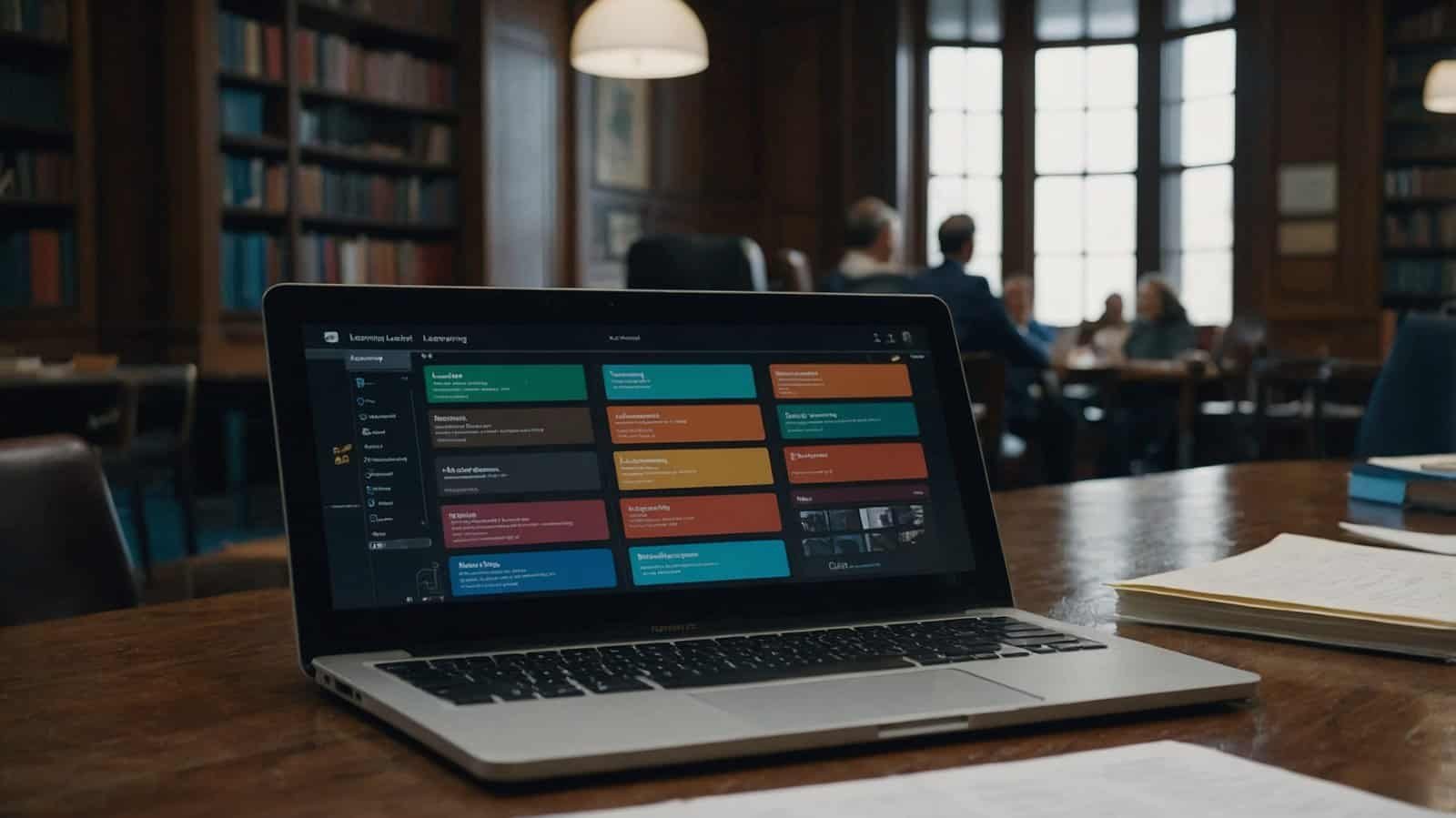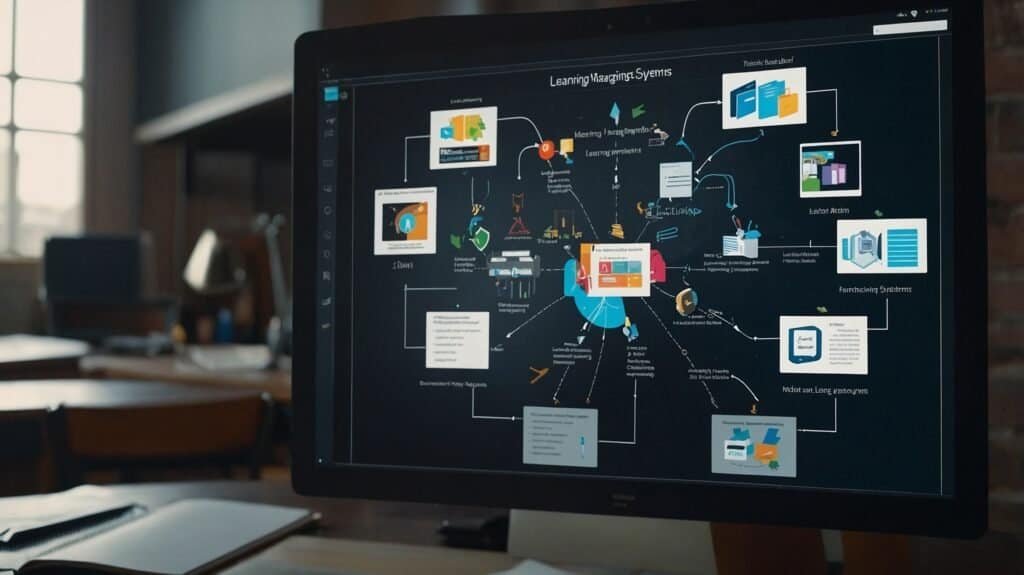This blog aims to simplify the concept of LMS and its core features, the value it adds to an organisation or educational institution, the significance of it changing today’s learning landscape, and a precise definition of it.
What is an LMS?
A learning management system (LMS) is a software application for the administration, documentation, tracking, reporting, and delivery of educational courses, training programs, or learning and development programs. It is a central repository where instructors, trainers, and administrators can build and manage content, monitor learner progress, and measure the success of training interventions.
Essential Features of an LMS
User-Friendly Interface
One important characteristic of any LMS is its user interface. The LMS should be intuitive or easy to use. This means that a user who has not been trained extensively usually does not need help to find what they are looking for. A more user-friendly interface means that the system is easier to use and to teach others to use, making it easier for learners and administrators to interact with the system.
Course Management
Fundamental to any LMS is course management—generally, the ability to create, update, or reorganise courses with different content formats (videos, PDFs, interactive quizzes) catering to diverse learning styles. The system should have a feature that allows the easy updating of courseware if there is new information coming in or a change in the regulation.
Assessment and Reporting Tools
Tools that provide assessments of learners progress are critical. LMS should be packed with a wide range of assessment options but also reporting tools so you can log learner progress, engagement, and performance. This data is key so business leaders can course-correct based on gathered intelligence to ensure your eLearning program provides the best experience for learners possible.

Personalization and Adaptive Learning
A state-of-the-art LMS should be able to adapt the experience of learning to the expressed (and implicit) needs of the learner. This might translate into automatically adapting the level of difficulty of the content to the learner’s performance, recommending other resources, or customising the learning path, to name a few.
Mobile Compatibility
In addition, since the use of mobile devices has increased significantly, an LMS must be mobile-enabled. For example, learners should be able to access courses or even complete their tasks via their mobile devices anytime and from anywhere they want.
Blended Learning Support
The online and face-to-face learning experiences offered to learners in blended learning should be consolidated in a single LMS that seamlessly integrates the VC tools so they can carry out live sessions and actively embed the in-person training components within the LMS.
Automation Features
Automation in a LMS can drastically reduce the work involved in undertaking administrative tasks such as automatic enrolment, automatic notices, automatic reporting, and many other operational tasks. Automated workflows ensure that learners are guided through the courses without any unnecessary manual intervention. Once all the lectures are uploaded to the system, an administrator need not worry about anything next.
Compliance and Security
Security is another feature that you can’t compromise on when choosing an LMS if your organisation has sensitive learner information, is subject to internal confidentiality agreements, or if you run corporate training, which will often involve handling commercially sensitive information. You should ensure that your LMS has advanced security features in place, such as data encryption, multi-factor authentication, and regular security audits, including the potential for third-party audits to ensure data breaches can’t occur.
Compliance features should also be high on the list of essential features of your LMS whenever your organisation needs to adhere to certain regulations, such as those in the healthcare or finance industries. You should ensure that your LMS helps you stay in compliance with all applicable legal and industry-specific requirements.
Integration Capabilities
A contemporary LMS should also be able to share data across other core business systems such as Human Resource Information Systems, Customer Relationship Management tools and video-conferencing applications, which improves the visibility of various tasks and streamlines a range of administrative activities.
Gamification and Engagement Tools
These elements add to gamification features such as badges, leaderboards and rewards, which turns a potentially dull learning experience into an exciting race to the finish (or top of the leaderboard). You’ll get greater participation and higher completion rates. It also brings a competitive edge into the learning experience, which can further drive better results.
Social Learning Features
Social-learning tools such as discussion forums, peer reviews, and group projects are being included as a standard feature of all LMS. There is a sense of ‘community’ that is fostered among learners through constant sharing of knowledge and completing tasks together, allowing learners to have that feeling of support and collaboration, which in turn will lead to a deeper learning experience.
Content Library and Management
This feature of LMS should have a centralised content library—a place where educators and administrators can store, tag, and organise learning materials they want to include across all courses in a way that is consistent for every student. They should also be able to retrieve, revise, or remove any assets seamlessly.
Why LMS Matters
The adoption of an LMS provides numerous benefits for college, university, and corporate training and institutes. Here below, I am going to discuss some of the key benefits of using an LMS. 1. The teacher/course tutor can set the date and time for each lesson objective to be achieved. 2. The teacher/course tutor can run the report for the required lesson to be completed to reduce the associated cost of non-attendance for the course.
Scalability
An LMS enables a scaled training program, be it for a small group or thousands of trainees spread across the globe, with little effect on the quality of training.
Cost-Effectiveness
One major advantage is that companies can save substantially on training costs by taking it online (travel, venue, materials, etc.), and time efficiency is a bonus as learners are able to complete modules at their own pace with less time away from work.
Consistency in Training
A key advantage of an LMS is its ability to make training experiences ‘uniform’: all learners get the course, and the same experience helps to maintain standards.
Enhanced Tracking and Reporting
An LMS generates analytical reports on the learning pattern of a learner, which makes it easier for an organisation to track how a learner is moving through the training as well as how well the training process is functioning at large. The data collected through the LMS can help in deciding where improvements can be made and how well the training is helping the learner achieve the organisational goal.
Flexibility and Accessibility
The flexibility that an LMS provides—the availability of materials to the learner at any time and anywhere—could be the key factor in the success of the adult learner or employee who needs to squeeze in training during a lunch break or fit study in amongst other domestic duties or work deadlines.
Improved Engagement and Retention
The features of an LMS, such as gamification, social learning, dialogue, and interactivity, can enhance learner engagement – and the higher engagement, the better retention of information and also higher course completion rates..
Personalization
With adaptive learning, modern LMS platforms can also address the level of information and prepare constructed instruction based on user needs; they may adjust the level of problem or enter every item, some problems, a few questions, and prepare a further learning course based on scores. Here are some adaptive learning modes presented; why don’t you try them? Adaptive Learning Modes Adjust the text level of input.Recommend further materials.Improve extra skills when one part of skill has passed.Provide users’ own feedback in several types.When one item is passed, launch the next.

Challenges of Implementing an LMS
Implementation of an LMS is not without its challenges, and these obstacles may include: While organisations can anticipate many benefits of an LMS, they must also consider the challenges to implementation, which may include:
Initial Setup Costs
It’s a large upfront investment, and for smaller organisations, the setup costs alone can be a barrier—buying the software itself, transferring existing resources such as content, and training staff in the new system.
User Adoption
Mainly, however, the most important challenge worldwide will be getting administrators and learners to actually use the LMS provided. Thus, the system needs to be easy to use and to grant user-decent training and support, especially in the transition phase.
Content Migration
Even for companies with training materials already developed, moving content into a new LMS can be a challenging, laborious task that sometimes requires reworking or redesigning content to fit the new system.
Technical Issues
As with any software, LMSs have an inherent risk of technical difficulties, from server crashes to bugs in the system. So, having good technical support on hand is an important part of managing disruptions.
Keeping Content Updated
Once you’ve got your LMS all set up, the ongoing task is to keep your training content accurate and fresh. Checking and updating it can be a real resource drain.
Conclusion
With the rise to prominence of technologies such as automation, machine learning and virtual reality, LMSs have gone from being a luxury item to a must-have for organisations, as well as schools and universities, seeking to provide stable, effective and scalable learning for their workforces. As the potential of technology continues to grow, there are likely to be further changes in what LMSs are capable of. Further use of AI for personalisation and more immersive VR and AR offerings seem likely, as well as increasingly sophisticated data and analytics tools to support training.
If you are just starting out to figure out LMS, then you should remember that these systems provide a wide array of advantages that far outweigh the initial difficulties of setup. If you work through your initial hurdles, choose the proper platform, and remain committed to your course and user capabilities, an LMS can revolutionise the way that your organisation trains, develops and engages its human capital in learning.
Similar Content
- Tips for Getting Started with Your First LMS
- How to Choose an LMS: A 5-Step Guide
- The Best Learning Management Systems

